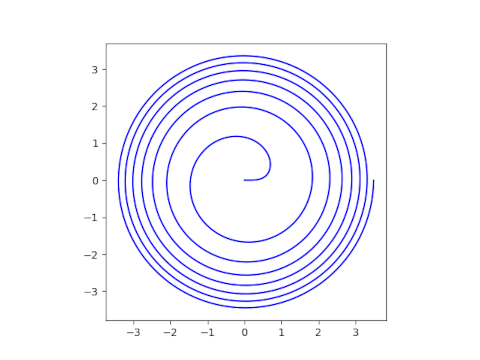This post ties together the previous three posts.
In this post, I said that an Archimedean spiral has the polar equation
r = b θ1/n
and applied this here to rolls of carpet.
When n = 1, the length of the spiral for θ running from 0 to T is approximately
½ bT²
with the approximation becoming more accurate [1] as T increases.
In this post we want to look at the general case where n might not be 1. In that case the arc length is given by a hypergeometric function, and finding the asymptotic behavior for large T requires evaluating a hypergeometric function at a large argument.
Here’s an example with n = 3.

Now the arms are not equally spaced but instead grow closer together.
Arc length
According to MathWorld, the length of the spiral with n > 1 and θ running from 0 to T is given by
As I discussed here, the power series defining a hypergeometric function 2F1 diverges for arguments outside the unit disk, but the function can be extended by analytic continuation using the identity
Asymptotics
Most of the terms above will drop out in the limit as z = −n²T² gets large. The 1/z terms go to zero, and hypergeometric functions equal 1 when z = 0, and so the F terms on the right hand side above go to 1 as T increases.
In our application the hypergeometric parameters are a = −1/2, b = 1/2n, and c = 1 + 1/2n. The term
(−z)−a = (−z)1/2
matters, but the term
(−z)−b = (−z)−1/2n
goes to zero and can be ignored.
We find that
L ≈ k T1 + 1/n
where the constant k is given by
k = bn Γ(1 + 1/2n) Γ(1/2 + 1/2n) / Γ(1/2n) Γ(3/2 + 1/2n)
When n = 1, this reduces to L ≈ ½ bT² as before.
[1] The relative approximation error decreases approximately quadratically in T. But the absolute error grows algorithmically.
The post Length of a general Archimedean spiral first appeared on John D. Cook.